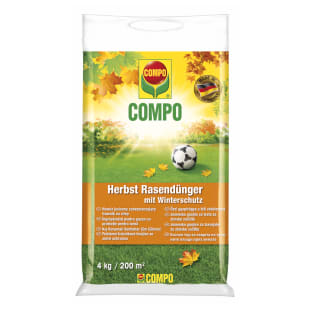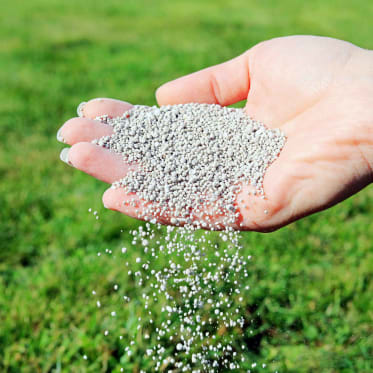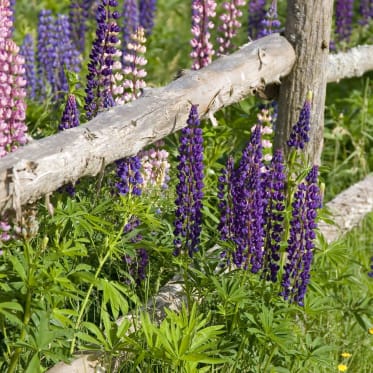Frequent search terms
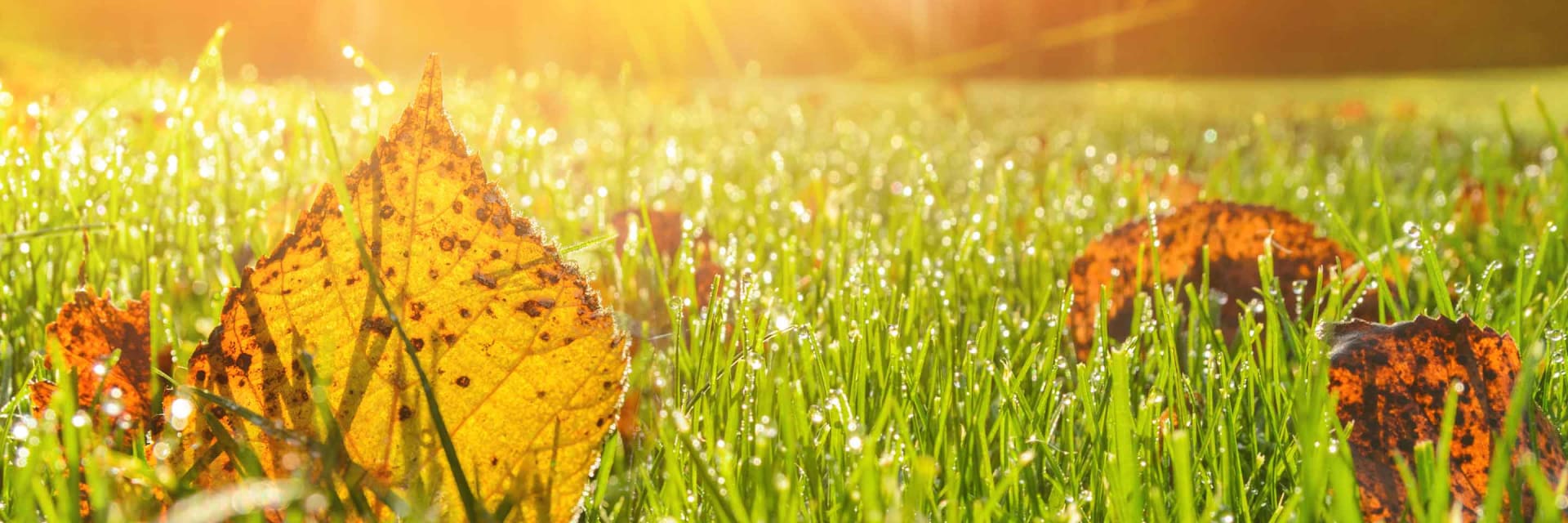
- COMPO
- Guide
- Plant Care
- Lawns
- Planning and care
- Lawn care in autumn
For a quick start in spring
Lawn care in autumn
I can't leave it like this - did you ever think that when you saw the dried-up summer lawn? Weed quickly spread in the gaps and with the onset of autumn rain it is only a matter of time before the moss joins in. You already guessed it: September is the crucial time to repair lawn damage from the summer. With the right lawn care routine in autumn, your lawn will not only start the winter stronger, you will also not have to wait so long for the first fresh shoots in spring.
The base case
Burned lawn and weed
The last summers were hot, and at the latest when the rain falls for several weeks, the lawn grasses are among the first plants to suffer damage. As a rule, lawn grass grows on larger open spaces with compacted soil, but it never extends its roots deeper than 10 cm into the ground. In dry spells, the blades of grass first become yellow before they fall down and dry out completely. This makes room for weed: because they are usually much more robust and some of their roots are very deep, so that they can still be supplied with sufficient water even during longer dry periods.

Possible until the end of October
Step 1: Scarify
The good news is that lawn roots are robust. Even if your lawn looks completely dried out on the surface, that doesn't mean that with a little water and patience something will not sprout again. But you need to help your lawn to get rid of weed and the thick mat of dried out lawn felt. This is best done with the help of a scarifier. Before you start looking for the tool, you should inspect the lawn once again. The moss should have dried up over the summer months and will be easy to remove. However, if your lawn is heavily infested with weed, it may be advisable to apply a weed killer a few weeks before scarifying, so that you will obtain a clean scarifying result.

Until the beginning of November
Step 2: Reseeding
Depending on how much material you have removed from the lawn during scarifying, you should then resow the lawn promptly. This is because weeds and moss quickly reappear in the gaps that have been created and the reseeding needs some time to grow before the onset of winter. If you have had to deal with the same lawn problems in recent years, it may be worthwhile for you to purchase special seed - there are, for example, mixtures for lawns that are particularly affected by heat and dryness, moss, shade or intensive use by playing children.

Autumn/ early spring
Step 3: Liming
The pH value of the soil plays a decisive role in healthy lawn growth. A value in the slightly acidic to neutral range (pH 5.5 to 7.5) is ideal for the lawn. Due to various influences, the pH value can drop over time. As a result, the lawn can no longer absorb many nutrients from the soil and the nutrient supply and durability of the lawn decreases. In addition, soil life is reduced and the soil structure deteriorates. By adding lawn lime, you can raise the pH value of the soil and thus improve the availability of nutrients. Apply the lawn lime in dry weather and then water extensively. Only after watering can the effect of the lime set in and lime residues on the grass be avoided. A minimum interval of 14 days should be observed between lime application and the next lawn fertilizer application.
The use of a lawn lime is only recommended for acid soils. If the soil is neutral or alkaline, lime can damage the lawn, because a too high pH value also leads to reduced growth, as the nutrients in the soil are fixed and therefore not available to the plants. Before liming, you should therefore always determine the pH value of your soil using standard test strips to check whether liming is necessary at all and what amount of lime should be applied.
The optimum time for the application of lawn lime is in autumn before the last lawn fertilization or in early spring before the lawn is fertilized for the first time. Due to the humid weather conditions, the lawn lime must be watered much less than in the warm and dry summer months.
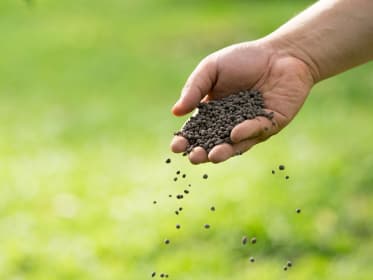
Until the beginning of November
Step 4: Fertilization
The new shoots after the dry summer months cost the lawn a lot of energy and depending on the weather, there is not much time left to form a winterproof sod. The best thing you can do for your lawn to make it fit for the winter is therefore to apply a special autumn lawn fertilizer.
But what is actually so special about an autumn lawn fertilizer? In contrast to conventional lawn fertilizer, autumn lawn fertilizer contains little nitrogen, because it is responsible for growth, which is hardly relevant in fall. Primarily, the lawn should be strengthened and potassium and phosphate are crucial for this. The potassium strengthens the blades of grass so that they are not dented by frost and snow - it also increases the salt concentration in the cell sap of the lawn plants and thus lowers their freezing point. Additionally in spring potassium helps the blades of grass to straighten up again quickly with the first warm rays of the sun.
Phosphate promotes root growth and thus ensures that the plants are supplied with sufficient mineral nutrients even in the cold season. This is one of the reasons why a lawn strengthened with autumn lawn fertilizer sprouts again much faster in spring. Besides, it is also less susceptible to fungi and other lawn diseases that can occur during the winter months due to a lack of nutrients.

Until end of October
Step 5: Continue mowing
Until the temperatures of the soil drop below 9 °C, you have to mow regularly. Especially after fertilization, the lawn should be mowed until it stops growing, as this is the only way to ensure that the delicate lawn germs will grow into strong blades of grass until the first frost. Since you can never know exactly when the last lawn cut will be this season, it is best not to cut your lawn shorter than 5 cm, otherwise ground frost can quickly penetrate to the root system of the grass and damage it. However, the grasses must not be too long either, otherwise they will break off in frost.
This could also be interesting for you

